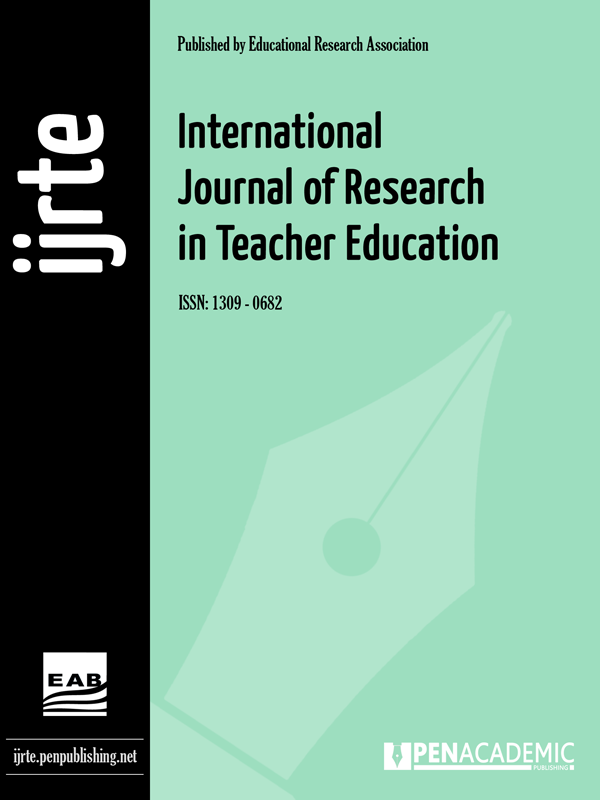Research article | Open Access
International Journal of Research in Teacher Education 2021, Vol. 12(3) 1-9
The relationship between Bullying and Student's academic performance
pp. 1 - 9
Publish Date: September 30, 2021 | Single/Total View: 212/677 | Single/Total Download: 297/1.246
Abstract
The main purpose of this study is to understand how young children experience bullying at schools in Kyrgyzstan, and what relationship does such experience have with their academic performance? The research was conducted at Naryn regional boarding school and up to 100 participants aging 13-17(8-9-10 11th graders) have been recruited for this study. Hence, quantitative research investigated the relationship between bullying and a student's academic achievement and the survey was used as a research instrument. The research found a minimal negative reaction to bullying and its effects on their studies by the majority of students. For example, for the statement: 'I had a low motivation to learn after experiencing bullying', 35% answered as unsure, 34% disagreed, and 30% of respondents agreed. This indicates that students are evenly split as to whether experiencing bullying lowered their motivation to study.
Keywords: bullying, academic performance, impact of bullying, school safety
APA 7th edition
Tukeshova, G. (2021). The relationship between Bullying and Student’s
academic performance. International Journal of Research in Teacher Education, 12(3), 1-9.
Harvard
Tukeshova, G. (2021). The relationship between Bullying and Student’s
academic performance. International Journal of Research in Teacher Education, 12(3), pp. 1-9.
Chicago 16th edition
Tukeshova, Gulnura (2021). "The relationship between Bullying and Student’s
academic performance". International Journal of Research in Teacher Education 12 (3):1-9.
Allanson, Leste, Notar (2015), A History of Bullying, International Journal of Education and Social Science, Vol. 2 No. 12; December 2015, Retrieved from: http://www.ijessnet.com/uploades/volumes/1576145463.pd
Ahmad (2019), Qualitative v/s Quantitative Research, Journal of Evidence Based Medicine and Healthcare, 6(43). Retrieved from:DOI:10.18410/JEBMH/2019/587
Bandura, A., & Walters, R. H. (1959), Adolescent Aggression. New York: Ronald Press, Retrieved from http://www.scirp.org/(S(351jmbntvnsjt1aadkposzje))/reference/ReferencesPapers.aspx?Referg:
Block ,(2014), The Impact of Bullying on Academic Success for Students With and Without Exceptionalities, Ontario Institute for Studies in Education of the University of Toronto, Retrieved from: https://tspace.library.utoronto.ca/bitstream/1807/67006/1/Block_Nadine_F_201406_MT_MT RP.pdf
Daniel Rosenfeld,(2014), Teacher Practices to Reduce Bullying in the Everyday Classroom:https://tspace.library.utoronto.ca/bitstream/1807/67050/1/Rosenfeld_Daniel_J_201 406_MT_MTRP.pdf
Espelage, D. L., Hong, J. S., Rao, M. A., & Low, S. (2013). Associations Between Peer Victimization and Academic Performance. Theory Into Practice, 52(4), 233–240. https://doi.org/10.1080/00405841.2013.829724
Education. (2016). UNICEF Kyrgyzstan. https://www.unicef.org/kyrgyzstan/education
Juvonen, J., Yueyan Wang, & Espinoza, G. (2010). Bullying Experiences and Compromised Academic Performance Across Middle School Grades. The Journal of Early Adolescence, 31(1), 152–173. https://doi.org/10.1177/0272431610379415
Lillis (2011), Relationship Between Bullying and Academic Achievement and Direct and Indirect Impact of Olweus Bullying Prevention Program: A Brief Review of Literature, Evalumetrics Research Report 2011-2-2, http://www.evalumetrics.org/files/Olweus_Bullying_Review.pdf
M. Swearer&Hymel, S. S. (2015). Understanding the Psychology of Bullying, Moving Toward a Social Ecological Diathesis Stress Model. American Psychologist, 70, No 4. https://doi.org/10.1037/a0038929
OECD, (2009), OECD Annual Report, https://www.oecd.org/newsroom/43125523.pdf’’
Olweus, D. (1995). Bullying or peer abuse at school: Facts and interventions. Current Directions in Psychological Science, 4(6), 196 -200. https://doi.org/10.1111/1467-8721.ep10772640
S.Mc.Leod (2020),Maslow’s hierarchy of Needs, Retrieved from: https://www.simplypsychology.org/maslow.html
YURTSEVEN, N., ALCI, B. & KARATAS, H. (2014). Factors Affectıng Academıc Performance In Efl Context: A Modelıng Study. International Journal of Research in Teacher Education, 5(1), 13-23.
UNICEF, (2018) “Половина подростков в мире сталкиваются с насилием со стороны сверстников в школ”, Retrieved from: https://www.Unicef.org/kyrgyzstan/ru.
United Nations. (2006). World Report on Violence Against Children. https://violenceagainstchildren.un.org/sites/violenceagainstchildren.un.org/files/document_files/world_report_on_violence_against_children.pdf
